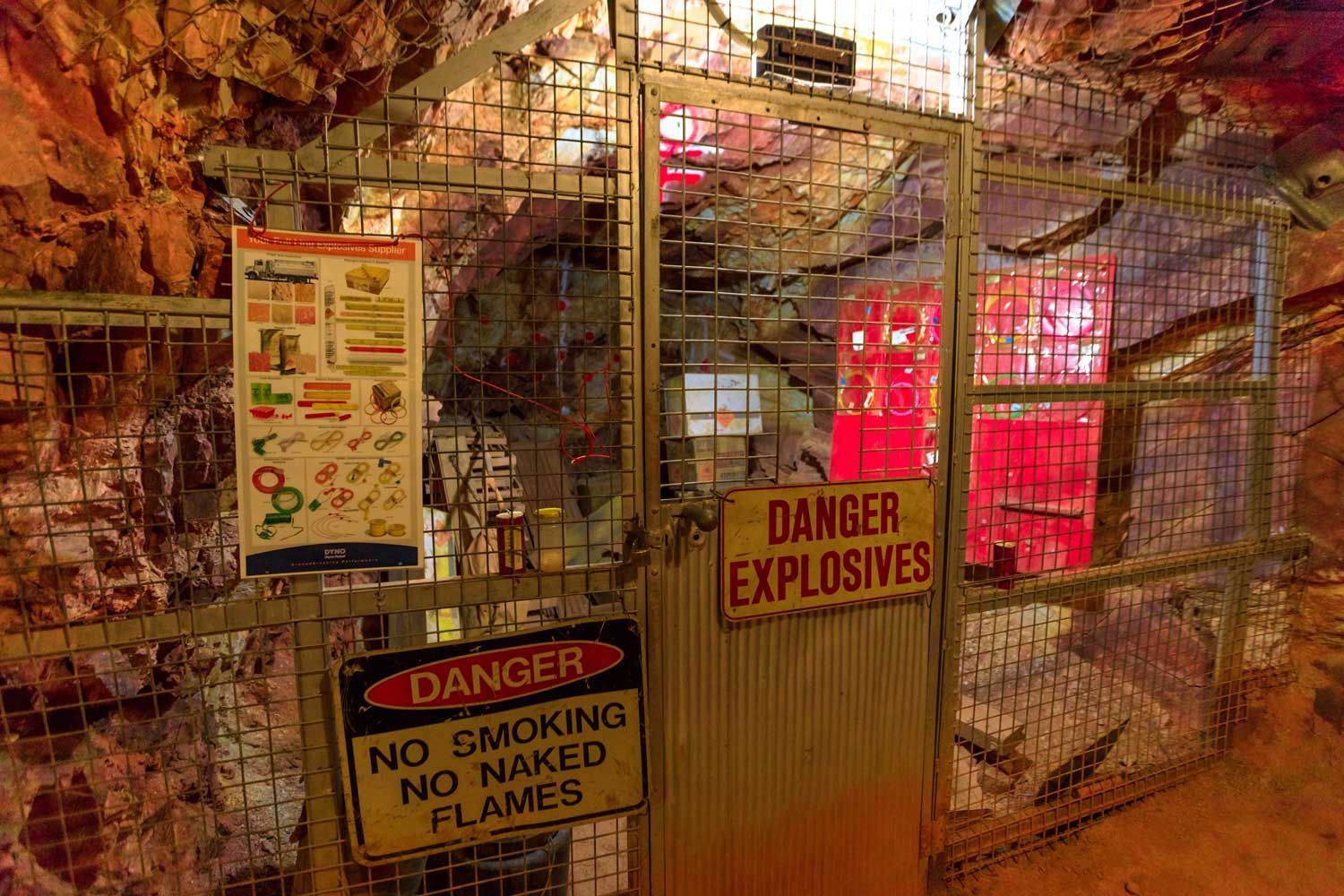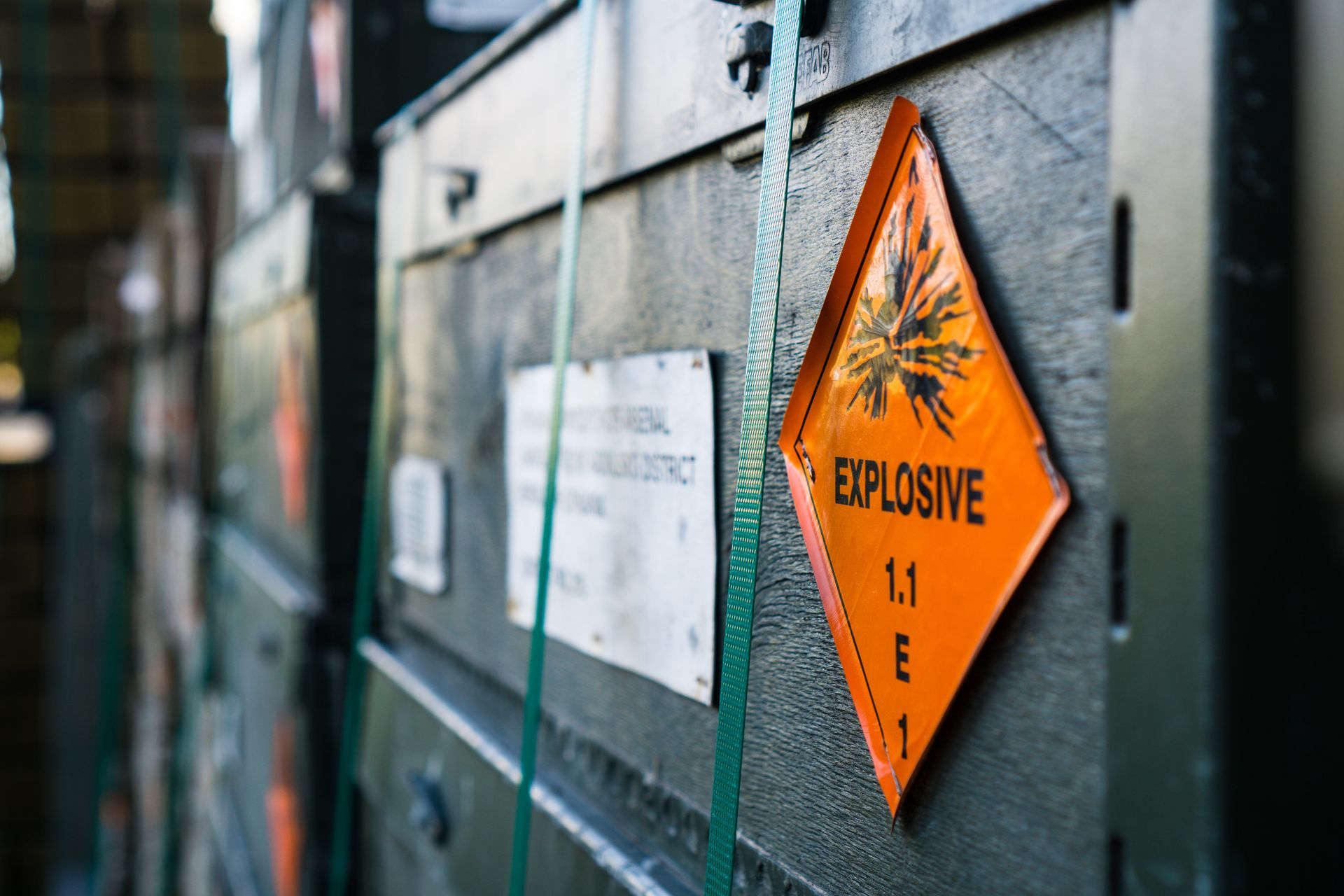News

Explosives are commonly used in the underground mining environment, however, their handling and usage come with inherent risks. Accidents involving explosives can lead to serious injuries or fatalities, as well as significant damage to equipment and infrastructure. During waste bogging operations at an Australian mine, a loader operator heard what sounded like a detonation of explosives. Although initial inspections of the muck pile didn't reveal any explosive material, further examination uncovered two pieces of cord-type explosives typically used for perimeter blasting. This explosive contained PETN, known to be sensitive to impact, friction, or heat. Fortunately, there were no injuries resulting from this incident. However, it serves as a stark reminder of the potential dangers associated with misfired explosives, which can lead to fly rock and serious injuries. In a separate incident, extensive damage occurred underground following a blast in a development heading, affecting ventilation ducting, services, and support mesh. Around 180 meters of drive were impacted, with significant damage to the support mesh near the face. The investigation revealed that excess ANFO, inadvertently initiated during face firing, was dumped onto the face due to time constraints and the charge-up vehicle needing maintenance. Contributing factors included time constraints, pressure to advance the heading, ventilation delays, misjudgments about remaining explosives, and failure to inspect for unconfined explosives. To prevent similar incidents in the future, it's crucial to adhere to the manufacturer's recommendations, implement a comprehensive blast management plan, conduct regular reviews and audits of blasting procedures, investigate misfires thoroughly, and acknowledge the risks posed by excessive explosives left in the workplace and ensure compliance with regulations for their proper disposal. The easier these are to undertake the more frequency and more accurate these will be. About Magman plays a critical role in creating safer mines by managing explosives inventory. It enables operators to efficiently monitor and manage explosive transactions without the burden of extensive paperwork or the need to rush tasks. This streamlined approach allows operators to focus more on their core responsibilities, enabling operators to make informed decisions, minimise risks, and maintain a safer working environment underground. The paperless operation is further enhanced by the use of specially certified intrinsically safe Simbio tablets that are able to work offline without emitting any radio frequencies. Article by - Eddy Zhang

In an environment where regulatory scrutiny over explosives management is at an all-time high, it is critical to ensure your magazine is in safe hands. Magman's decade-long track record of real-world success and regular audits from each state department provides clients with the assurance they need to navigate regulatory complexities with confidence. Magman was purpose built and originated to ensure strict compliance with the Explosive Act 2003 and Explosive Regulation 2013. Key measures include; Maintenance of Security Clearances and Licenses : The Magman database allows all required security clearances and licenses are current and to be readily available upon demand by authorities. Additionally, a detailed plan records all individuals with security clearances, including expiry dates. WHS Risk Assessment: As the operator conducts thorough WHS risk assessments, covering various aspects of explosives handling such as loading and stemming of blast holes, initiation systems, exclusion zones, misfire handling, and more. Magman allows the charge up operator direct access to these documents. Magazine Records Management: All magazine records are meticulously maintained in the Magman cloud system, with regular system audits conducted by experienced mining personnel. These audits aim to identify any discrepancies that the client has not be made aware of. Explosives Inventory Control: An inventory of stored explosives is kept, with electronic records of all transfers in and out of the magazine. Stocktakes which ensure accuracy can be made mandatory in the Magman system before any transaction each shift. Robust systems are in place to handle discrepancies found during stocktakes and we have extensive experience solving any issues hand in hand with our clients. Record Retention: Records in the stock register are retained in our secure database with easy access for much longer than the two years required. Prohibited Items Prevention: Strict protocols prevent prohibited items such as two-way radios and mobile phones from entering storage areas, minimizing potential safety hazards. Magman’s purpose built hardware ensures strict compliance with AS 2187, do not risk your operation with noncompliant tablets or devices. Intrinsically Safe: Ruggedised tablets that have been RF certified and tested for deployments. These devices are customised to our specification so that the tablet can safely be used in an explosive magazine with confidence and safety. With these meticulous systems and processes in place, Magman ensures not only compliance with regulatory requirements but also the highest standards of safety and security in explosives management. Clients can trust Magman to allow our clients to succeed even in the most demanding regulatory environments. Article by - Eddy Zhang

Solving explosive management and compliance issues in mining and regulated industries The industry is a bustling sector of ideas, products, services that are intended to help make the most of the mining value chain. It's often tempting for organisations that sell into this sector to focus on the allure of features. Anything from the sleek intrinsically safe tablet to the functionalities of a software program that manages resource specific requirements. Features are flaunted as badges of innovation and superiority – yet in this there lies a profound oversight: the neglect of the fundamental question – what problems do these features solve? Our Chief Operating Officer – Ian Jansen encouraged our team to think about the problems we solve for our customers and to retain the essence of why people seek out our Magman products in the first place. Word of mouth has been a wonderful tool that has allowed us to acquire over 70 mine sites globally but is only one thread of challenges, desires, and aspirations of our customers. In highly regulated industries every organisation grapples with a mix of compliance, operational and unique site-specific problems. It is within the context of these challenges that Magman (acquired by Digital Terrain in 2023) is applying the lens of true value and embarking on our next round of problems to solve. This led us to summarise what problems we solve today, and what we do today – a digital no-nonsense product, built by miners, for miners to help with the management of a magazine for explosives. Making sure that compliance is met, while being easy to use; and we’ve been doing it for over 10 years, so we know a thing or two about what works and what doesn't. Make it easy : We make it easy to replace paper record keeping in a magazine with legislatively compliant, certified, intrinsically safe tablets and specialist software. Easier said than done because we’ve seen many complex problems to the simple problem of replacing paper records. Reduce Errors : We reduce the number of errors, with no need to transcribe into error prone spreadsheets with formulas. It’s all done for you. Automatic notification and escalation of errors. The cost of shutting down the operation to resolve an error is enormous. Correcting typos on the go is handy and helps this too. Improve Accuracy : Large, simplified buttons backed by best practice user processes helps with the repetitive nature of data capture for explosives movement Efficient blast designs or stope firings : Prevents busy operators from needing to fill out entire takes. This improves speed and efficiency akin to a recipe process. Elevating governance and risk management : Unmissable notifications that highlighting on stock discrepancies keeps the magazine in check. Peace of mind with notifications that enable 24/7/365 compliance and governance needs with change logs and transaction history for investigation audit trails. Ease of Reporting : Integrated reporting or export of data to excel, with dashboarding and API options.

Digital Terrain's acquisition of Magman propels a leap forward in explosives magazine management for the mining industry, ensuring compliance and safety. Integrating Magman's robust tablets with Digital Terrain's solutions amplifies efficiency and user experience. CEO Andrew Rouse highlights the merger's potential for collaboration and product enhancement, promising enriched systems with valuable data insights. The expansion also marks significant company growth, emphasizing a team versed in mining and software—a synergy poised to meet on-site challenges effectively. Magman will maintain its operational independence, benefitting from Digital Terrain's strategic and managerial support, fostering innovation in product development and integration.



